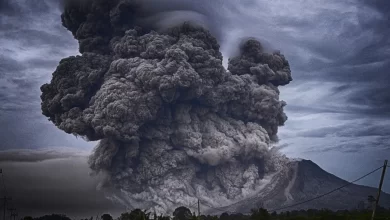The hottest season of the year is summer. The rise in temperature leads to the evaporation of water to evaporate, and thus monsoon comes. However, since children’s schools are closed during the summer, this is the most entertaining season for them. Summers usually last from mid-March to late June, but due to a monsoon delay, they can last until the first week of July.
- It’s a myth that in summer’s sun is close to planet earth. Seasons on our planet happens because of its rotating axis. When the Northern hemisphere is enjoying winters, it would be summers in the southern hemisphere. The sun’s rays strike that region more directly in summers than at any other time of the year.
- The daytime duration at the Equator remains 12 hours in all seasons; the duration at all other latitudes varies with the seasons. During the winter, daytime lasts less than 12 hours; during the summer, it lasts more than 12 hours.
- The summer season begins in the Northern Hemisphere on June 20 or 21, which is also known as the summer solstice, when the axis of rotation is tilted a full 23.5° toward the sun. The incoming solar radiation hits Earth directly at a perpendicular or 90° angle to the 23.5°N parallel of latitude.
- In the Southern Hemisphere countries like Brazil, Australia, and New Zealand, summer lasts from December until March, when there are peak winters in the northern hemisphere.
- The word “Summer” is derived from the Old English name for the season “sumor,” which in turn derived from the Proto-Germanic word sumur, which itself came from the Proto-Indo-European word sam, meaning summer.
- During the summer season, the Eiffel Tower of France gets taller by up to 6 inches. The temperature in the city of Paris reaches 40°C during the peak summer days. Due to extreme heat, the metal at the base of the Eiffel tower expands, which causes the height increase of the tower. It also leads the top of the tower to tilt away from the sun by up to 7 inches.
- For most countries, the warmest day occurs sometime between mid of July and mid of August. The amount of solar radiation reaching Earth (in the Northern Hemisphere) peaks at the summer solstice on June 21, but temperatures tend to keep increasing till July.
- Thunderstorms are more common in the summer season because the days are longer, as there is more sunshine and therefore more energy time which leads to more water evaporation.
- According to the WMO (World Meteorological Organization), the highest temperature during summers was 56.7 °C (134.1 °F) which was recorded on July 10, 1913, in Furnace Creek (Greenland Ranch), California, United States.
- The summer has been the top season for births in the United States of America, and August often wins the title for being the month during which most babies are born.
References
- Britannica-Summer
- Wikipedia-Summer
- Loc.gov(Why it is hot in summers and cold in winters)
- Ces.fau.edu(summer solstice)
- Wikipedia-Season(Summers in southern hemisphere)
- Todayifoundout.com(word summer derived from)
- Inshorts.com(Eiffel Tower get taller by 6 inches in summers)
- National Geographic-Season
- Livescience.com(The summer is top season for births in United States)






